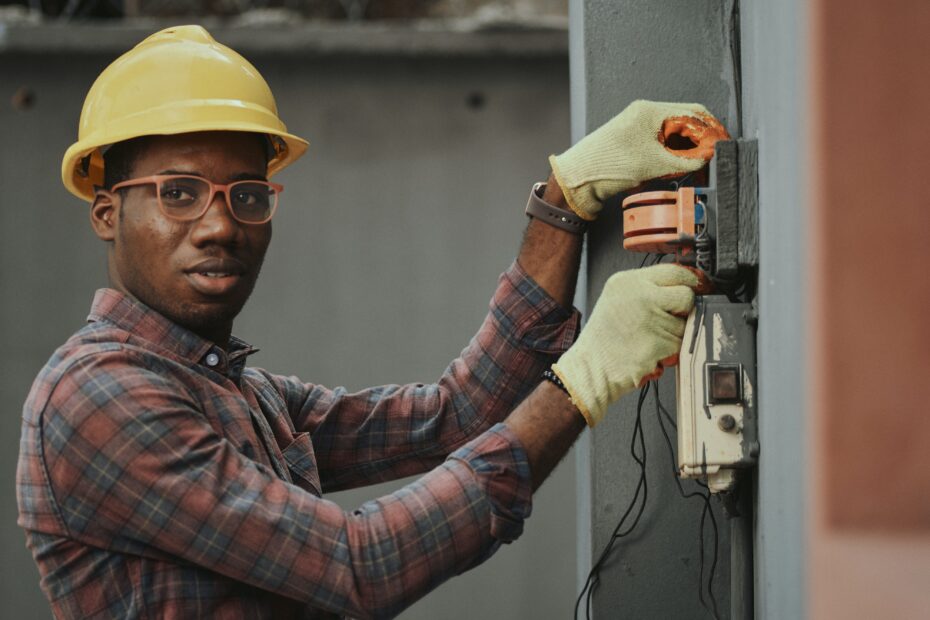What we're covering..
Introduction 👋
Without question, teaching young people about fire safety is extremely important.
Studies have shown that in England in the year ending March 2022, there were 27,166 home/dwelling fires – a one percent increase from the previous year.
However, if you’re teaching, it’s difficult to find the time to do all the research, so you can teach it!
Save yourself time by using our free interactive fire safety quiz to teach your learners about fire safety!
The quiz:
- Starts with the basics 🪜
- Includes interesting fire safety facts and statistics 🧠
- Explains fire safety in a simple and entertaining way 🤹♀️
This quiz can be used to:
- check learners’ understanding of fire safety 🧠
- introduce the topic of fire safety 👋
- check learners’ familiarity with electrical fire safety and fire safety vocabulary ✅
- facilitate group discussions about fire safety 💬
Disclaimer: This website provides information for guidance and educational purposes only. The Grown-Up School does not provide specialist fire safety advice, and bases resources on government guidance provided at the time of writing. You can seek independent fire safety advice from a suitably qualified and regulated professional advisor. Check out our disclaimer policy for more information.
Lesson Objectives 🏆
By the end of this lesson, learners will:
- Understand the importance of having functioning smoke alarms in the home, and ways in which some electrical fires are commonly caused
- Be aware of different measures that can be taken to prevent electrical fires at home
- Gain a basic understanding of how to respond to electrical fires
Learner Record Notes✍️
Once you’ve completed this quiz, you can add these notes to your records for your learners:
Today we completed an interactive quiz about kitchen fire safety, where learners assessed their own understanding of fire safety at home.
This activity supported the development of the following skills:
- Numeracy – learners developed their understanding of application of number, with quiz questions featuring fractions and numbers.
- Literacy – learners read quiz questions and answers, and were introduced to new vocabulary.
- Problem solving – learners used problem solving skills to decide between different quiz answers.
- Decision making – learners made decisions under time pressure, considering feedback from other participants.
- Working with others – learners chose answers in teams, negotiating with other participants.
- Communication skills – learners participated in group discussions about fire safety.
- Digital literacy – learners completed the quiz online, using web links and participation codes. Where connection issues were experienced, learners worked to resolve them and connect to the quiz online.
- Improving own learning and performance – learners developed their confidence assessing their own understanding of a topic.
Kahoot Quiz 📱
Get the whole group playing, by completing these fire safety quizzes as an interactive Kahoot quiz!
Just click the links below to get started.
Fire safety at home – preventing electrical fires (UK) 🔥
Printable Quiz 🖨️
If Kahoot! isn’t your thing, here’s a printable version of the quiz!
Questions 🤔
Q1: How many fires are started every year by faulty electrics? (Appliances, wiring, and overloaded sockets) 🔌⚡
- 1,000
- 2,000
- 3,000
- 4,000
Q2: How much more likely are you to die in a fire, if you don’t have a working smoke alarm in your home? 🔔
- Two times
- Three times
- Six times
- Eight times
Q3: When you buy an electrical appliance, what safety mark/label should you make sure it has on it? ⚠️
- Red safety mark
- British/European safety mark
- USA/Canadian safety mark
- Road safety mark
Q4: Why should you avoid plugging high-powered appliances into extension leads? (E.g. washing machines?)🔌
- It wouldn’t work on an extension lead
- It increases the risk of overheating
- It increases the risk of the machine turning off
- It looks untidy
Q5: Ideally, how many plugs should be attached to each mains socket? 🔌
- One
- Two
- Three
- Four
Q6: Why should you keep electrical appliances clean and in working order? 🧽
- Because your teacher might tell you off otherwise
- To prevent them from triggering a fire
- To prevent them from making noises
- To break them
Q7: Each electrical appliance you own uses a different amount of power so it’s important to know how much each appliance is using to avoid fires.
To prevent extension leads from getting overloaded, what do you need to check? 🧐
- If your light switch works
- If you have candles at home
- How much power it takes to become prime minister
- How much power the extension lead can handle
Q8: If your appliance has a “CE” logo written on it, what does it mean? 🦺
- It can be used for cooking
- It has previously been in a fire
- It meets EU safety requirements
- It is a cool electrical appliance
Q9: Fuses are small electrical devices that sit inside plugs to prevent overloading/fires.
What might happen if you put the wrong size fuse inside a plug? 📏
- It’ll turn the appliance on
- It’ll make a weird noise
- It could overheat
- It could turn the appliance off
Q10: Why should you secure portable heaters up against a wall? 🧱
- To make them look nice
- To stop them from falling over
- To help them stay warm
- So you can dry clothes on them
Q11: Which of the following is a good way to reduce the risk of fire? 🧯
- Put lots of plugs into an extension lead
- Put a heater next to curtains
- Unplug electrical appliances
- Put the wrong fuse into a plug
Q12: Where is the best place to put a portable heater?
- Secured against a wall
- Next to furniture
- Under clothes that need drying
- Next to curtains
Q13: Which of these is not a sign of a dangerous electrical fitting?
- Scorch marks
- Hot plugs and sockets
- Lights that work
- Blown up fuses
Q14: Which of these is not a sign of a dangerous electrical fitting?
- The house’s electrical box switching off (AKA “tripping”)
- Loose wires
- Electrical speakers playing music
- Flickering lights
Q15: Unplugging electrical appliances is a very good way to reduce the risk of a fire.
Which of these is the best reason to keep an appliance plugged in? ⚡
- You’re going to bed
- You’re using the appliance
- You’re not using the appliance
- The appliance is fully charged
Q16: Old cables and leads can be a fire risk, especially ones that are hidden from view e.g. under furniture or mats.
What should you do to prevent them from becoming a fire risk? 🧐
- Paint them a different colour
- Snap them in half
- Check and replace them regularly
- Plug them into an extension lead
Q17: Why is it good to make sure that your furniture has a fire resistant label? 🛋️
- It means the furniture fabric is soft
- It means the furniture fabric won’t get scratched
- It means the furniture fabric will always extinguish fires
- It means the furniture fabric is resistant to fire
Q18: Electric blankets can be great for keeping you warm, but a fire risk if you leave them on at night.
When is the only time you can leave an electric blanket plugged in when you go to bed? 🛌
- When you’re tired
- When it’s cold
- When the blanket is extra large and brand new
- When the blanket has a thermostat control to make it safe for all night use
Q19: Which of these is not a good way to store electric blankets, and could damage the electrics? 🛏️
- Flat
- Rolled up
- Loosely folded
- Tightly folded
Q20: Which of these is an indicator that an electric blanket is safe to use? ✅
- It’s secondhand
- It has wear and tear
- It has a safety inspection certificate
- It has loose wires
Q21: What should you do if there is a fire? 🔥
- Get your valuables and run
- Stay in, get a snack
- Get out, stay out, call 999
- Get out, stay out, order a pizza
Answers ✅
- Q1: Answer 4 – 4,000 fires are started every year by faulty electrics e.g. appliances, wiring, and overloaded sockets.
- Q2: Answer 4 – You are eight times more likely to die in a fire if you don’t have a working smoke alarm in your home.
- Q3: Answer 2 – When you buy an electrical appliance, you should make sure it has a British or European safety mark on it.
- Q4: Answer 2 – You should avoid plugging high-powered appliances into extension leads because it increases the risk of it overheating.
- Q5: Answer 1 – Ideally you should only put one plug in each socket without extension leads.
- Q6: Answer 2 – You should keep electrical appliances clean and in working order to prevent them from triggering a fire.
- Q7: Answer 4 – Before using an extension lead, you should check how much power the extension lead can handle, and how much power you’re attaching to the extension lead.
- Q8: Answer 3 – If your appliance has a “CE” logo written on it, it means that the appliance meets EU safety requirements.
- Q9: Answer 3 – If you put the wrong size fuse inside a plug it could overheat.
- Q10: Answer 2 – You should secure portable heaters up against a wall to stop them from falling over.
- Q11: Answer 3 – Unplugging electrical appliances is a good way to reduce the risk of fire.
- Q12: Answer 1 – The best place to put a portable heater is secured against a wall, and not next to furniture, clothes, or curtains.
- Q13: Answer 3 – Lights that work are not a sign of a dangerous electrical fitting. Scorch marks, hot plugs and sockets, and blown up fuses are signs of dangerous electrical fittings.
- Q14: Answer 3 – Electrical speakers playing music are not a sign of a dangerous electrical fitting. Loose wires, flickering lights, and the house’s electrical box switching off (AKA “tripping”) are signs of dangerous electrical fittings.
- Q15: Answer 2 – Electrical appliances should be plugged in when you’re using them, but it is good to reduce the risk of a fire by unplugging appliances when you’re going to bed, not using the appliance, or if it’s fully charged.
- Q16: Answer 3 – You should check and replace old cables and leads regularly (especially ones that are hidden from view), to reduce the risk of a fire.
- Q17: Answer 4 – Fire resistant labels mean that your furniture fabric is resistant to fire. It’s a good idea to make sure that your furniture has them.
- Q18: Answer 4 – You should only leave an electric blanket plugged in overnight if it has a thermostat control to make it safe for all night use.
- Q19: Answer 4 – Tightly folding electric blankets could damage the electrics. They should either be stored flat, rolled up, or loosely folded.
- Q20: Answer 3 – Safety inspection certificates are an indicator that an electric blanket is safe to use. If your electric blanket is secondhand, has wear and tear, or has loose wires, it might not be safe to use.
- Q21: Answer 3 – If there is a fire you should get out, stay out, and call 999.
Similar quizzes to “Fire safety at home quiz: preventing electrical fires (UK) 🔌” ⬇️
4 money myths you shouldn’t believe 🦄
Why you should save for retirement when you’re really young 🧓
8 reasons to start saving money now 🐷
Is borrowing money a bad thing? 🤷♀️
8 bad money habits you should break💰
🎓
Follow us!
for free daily Grown-Up lessons 🙌🎉



